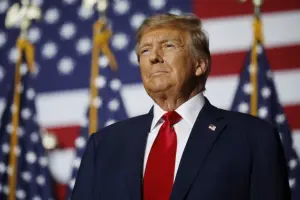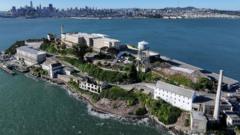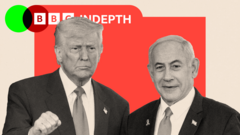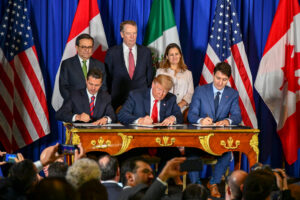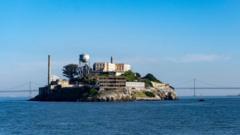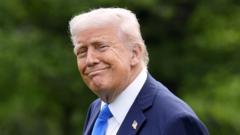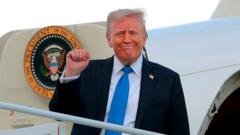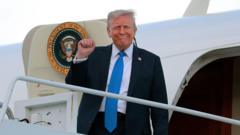In a unique political landscape, Mark Carney seeks to secure a full term as Prime Minister by confronting perceived threats from President Trump.
# Mark Carney: Canada’s Prime Minister in the Spotlight Amid Election Challenges

# Mark Carney: Canada’s Prime Minister in the Spotlight Amid Election Challenges
As Canada prepares for a federal election, Prime Minister Mark Carney is leveraging tensions with the U.S. to bolster his campaign.
In the lead-up to the elections, Carney's approach intertwines his management experience with the urgency of U.S.-Canada relations.
Mark Carney's journey in politics has been anything but conventional. After years of eschewing political positions despite offers, the threat of U.S. tariffs and annexation from President Trump became a catalyst for his entrance into politics. By January, Carney found himself as Canada's Prime Minister, and now he's leading the Liberal Party in a pivotal election campaign. He aims to establish a comprehensive new agreement with the United States to address trade and diplomatic concerns.
Carney, 60, presents himself as a well-dressed leader with an academic demeanor and a hint of dry humor, though he does not possess the charismatic aura of his predecessor Justin Trudeau or the engaging campaign style of Conservative leader Pierre Poilievre, 45.
While Carney's campaign may lack emotional resonance, he is betting on his deep understanding of economic realities and foreign relations, especially under President Trump's controversial leadership. As he competes for a full term, the effectiveness of his strategic appeal to U.S.-Canada relations could be a decisive factor in shaping the future of Canadian politics.
The election outcome remains uncertain, with Greater Toronto expected to play a crucial role in determining whether Carney can secure the support needed for a continued mandate. As the nation watches, the stakes are high not just for Carney, but for the broader Canadian political landscape.
Mark Carney's journey in politics has been anything but conventional. After years of eschewing political positions despite offers, the threat of U.S. tariffs and annexation from President Trump became a catalyst for his entrance into politics. By January, Carney found himself as Canada's Prime Minister, and now he's leading the Liberal Party in a pivotal election campaign. He aims to establish a comprehensive new agreement with the United States to address trade and diplomatic concerns.
Carney, 60, presents himself as a well-dressed leader with an academic demeanor and a hint of dry humor, though he does not possess the charismatic aura of his predecessor Justin Trudeau or the engaging campaign style of Conservative leader Pierre Poilievre, 45.
While Carney's campaign may lack emotional resonance, he is betting on his deep understanding of economic realities and foreign relations, especially under President Trump's controversial leadership. As he competes for a full term, the effectiveness of his strategic appeal to U.S.-Canada relations could be a decisive factor in shaping the future of Canadian politics.
The election outcome remains uncertain, with Greater Toronto expected to play a crucial role in determining whether Carney can secure the support needed for a continued mandate. As the nation watches, the stakes are high not just for Carney, but for the broader Canadian political landscape.

